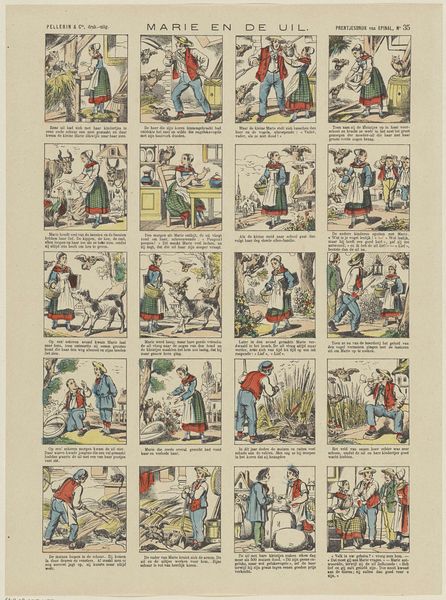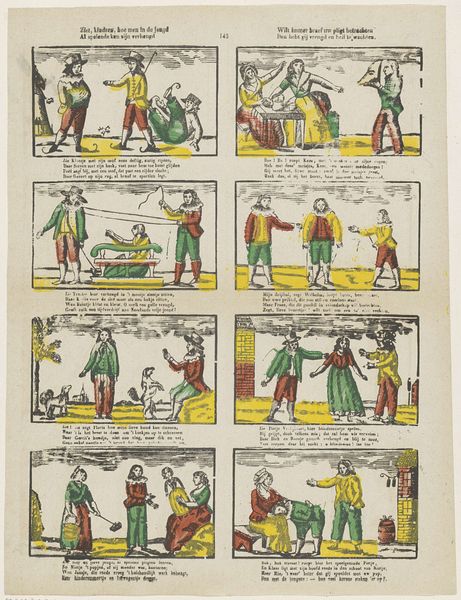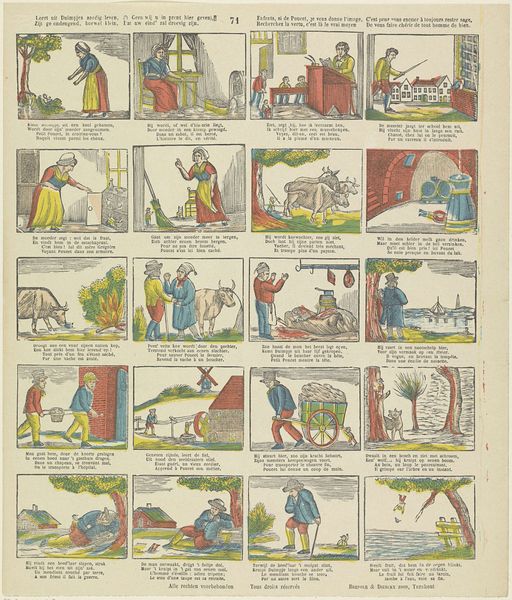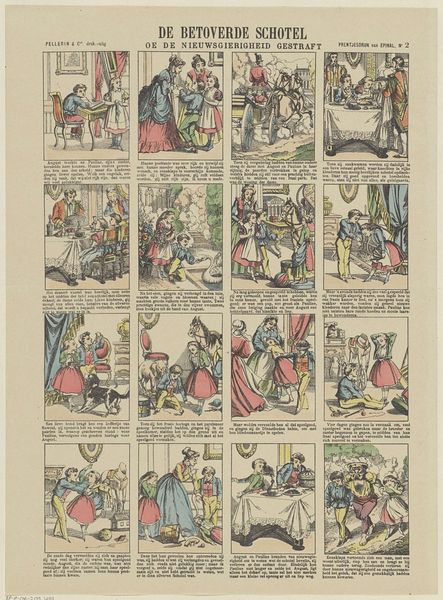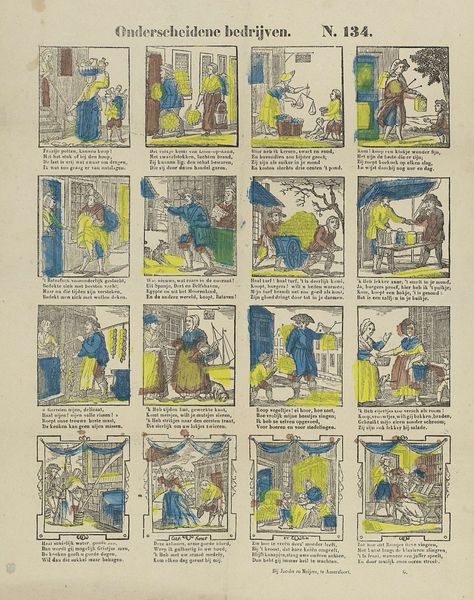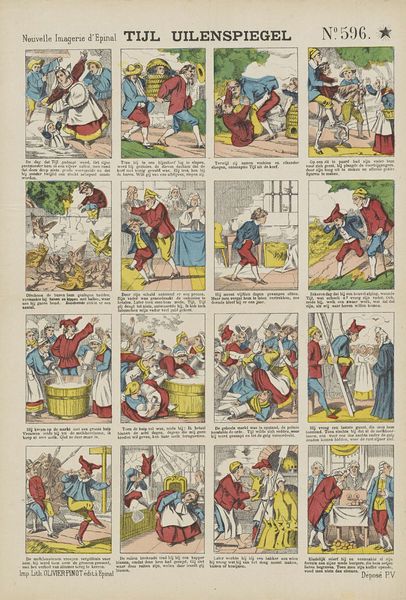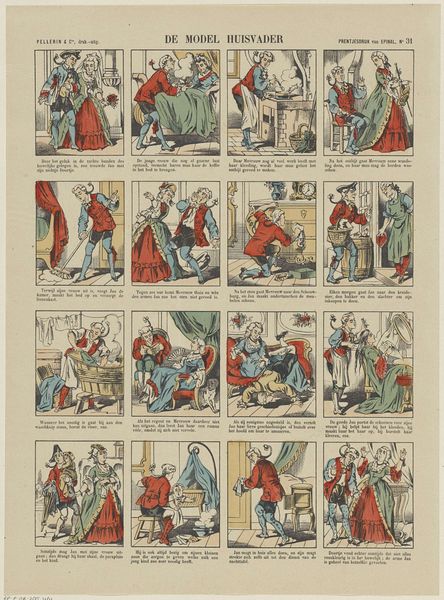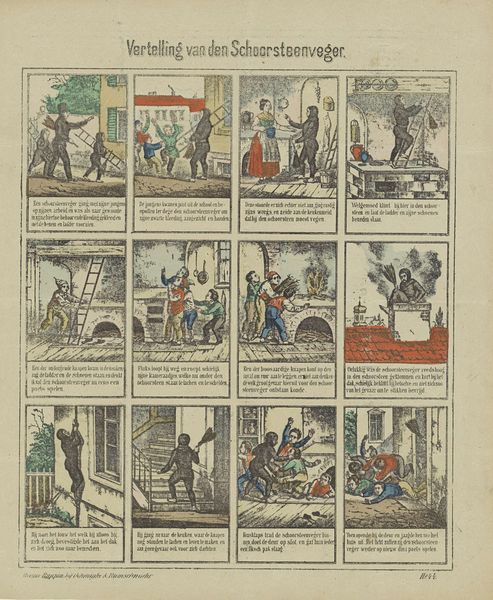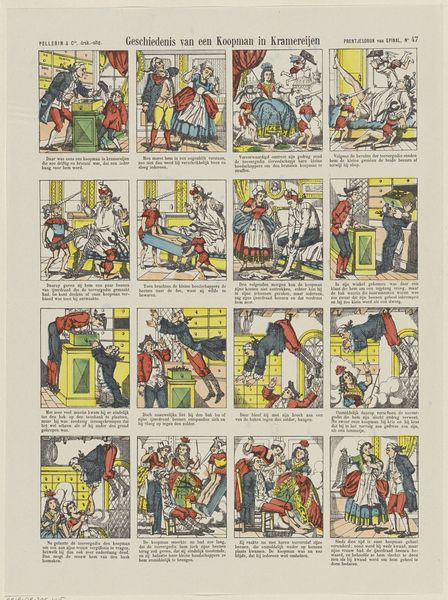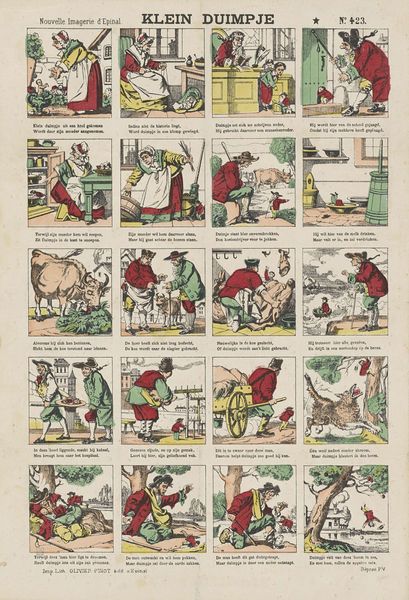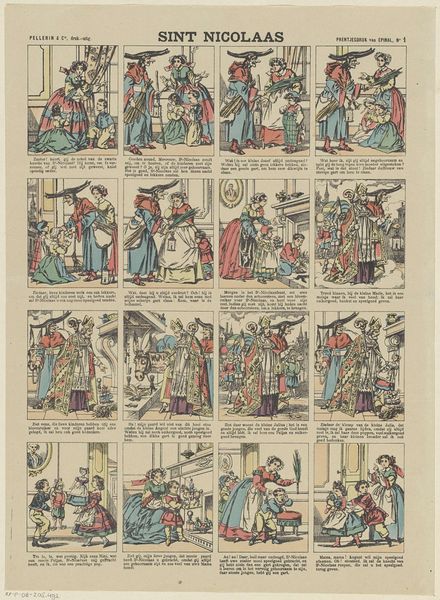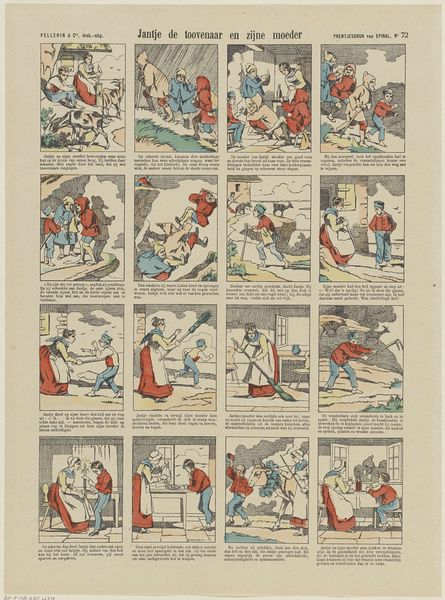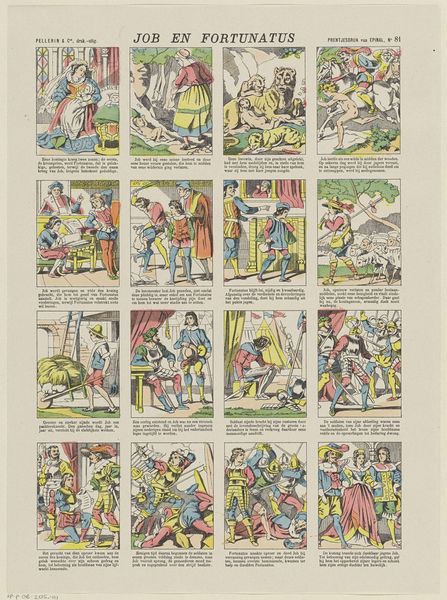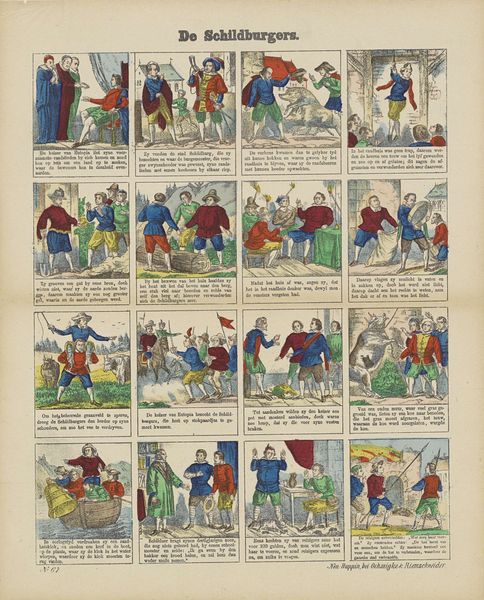
#
narrative-art
#
comic strip
# print
#
caricature
#
comic
#
genre-painting
Dimensions: height 397 mm, width 294 mm
Copyright: Rijks Museum: Open Domain
Curator: Look at this peculiar page, ‘De lotgevallen van Cyprien Kikkertje,’ created around 1902 by Pellerin & Cie. It's a series of little vignettes, almost a proto-comic strip, rendered as a print. Editor: Oh, fascinating. Immediately, I’m struck by the… colonial gaze, I suppose. These sequential scenes depicting some frog-man's misadventures—the color palette is restrained, but there’s this bizarre sense of adventure mixed with what feels like blatant caricature. A very uneasy atmosphere. Curator: Precisely. It's a narrative piece, so we’re witnessing Cyprien's escapades, shall we say. Caricature is definitely a strong element here. These stocky figures, broad strokes… They certainly convey a narrative, but through a lens that, to our modern eyes, is… quite charged. Editor: Right. So, we have him first, as some kind of sailor or…dock worker? Then almost immediately he’s on a ship, trading kisses, next he’s stranded amongst…island people? It's this whirlwind tour through potentially dangerous and culturally insensitive territory, rendered in cheerful colors. It feels deeply embedded in its time—a casual depiction of power and exoticism. Curator: I agree. And it hits upon a sense of storytelling inherent within print work like this from this era. Pellerin & Cie are known for producing this type of narrative art for popular consumption. It allows them to project and perpetuate these colonial-era fantasies while critiquing the "genre," a tightrope walk in itself. Each panel reinforces stereotypes while delivering some degree of narrative. Editor: I keep coming back to those faces. The exaggeration in those figures and in their actions - while meant to be humorous, are really quite jarring now. A good example of cultural memory, right? How imagery and those embedded symbolic assumptions really resonate and change meaning over time. What was probably considered harmless at the time is certainly not harmless to us. Curator: Absolutely. It's a potent reminder of how much context shapes our understanding, how visual language evolves—and how art, even in its seemingly simple forms like this print, becomes this powerful repository of cultural attitudes and societal norms of yesteryear. Editor: Definitely food for thought! For how we interpret art then but how that process of visual construction also shapes what’s to come in the future.
Comments
No comments
Be the first to comment and join the conversation on the ultimate creative platform.
